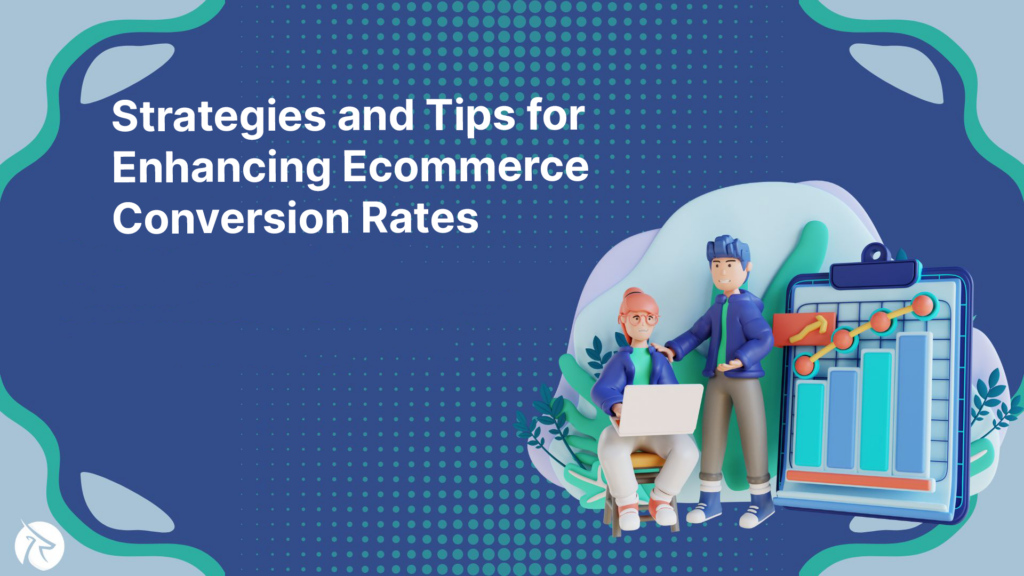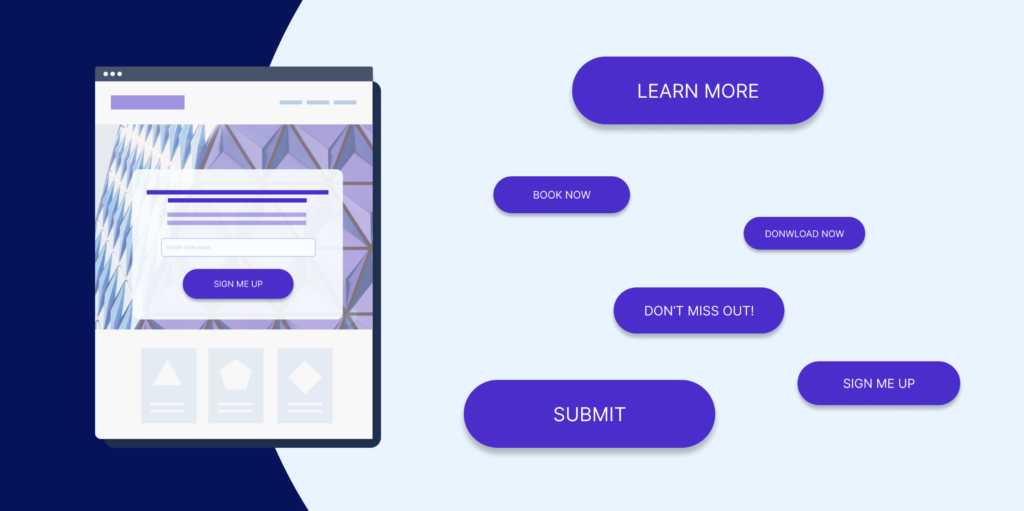13 Top Strategies and Tips for Enhancing Ecommerce Conversion Rates
4-10-2023 eCommerce SponsoredIn the world of e-commerce, converting visitors into customers is the ultimate goal. However, the average e-commerce conversion rate stands at just 2.86%, meaning that out of every 100 website visitors, only about three make a purchase. But here’s the good news: this article presents ten proven strategies, illustrated with real examples from Shopify websites, to boost your conversion rates.
From creating compelling calls-to-action to optimizing the checkout process, these strategies will help you turn online shoppers into paying customers and maximize your e-commerce success. Let’s get started on the path to higher conversions with Fordeer!

Understanding “ecommerce conversion optimization”
What does “ecommerce conversion optimization” entail?
Ecommerce Conversion Optimization, often abbreviated as CRO, revolves around enhancing a website’s performance with the primary objective of increasing the number of visitors who take desired actions, such as becoming customers, clients, or subscribers.
Whether you’re in the business of selling products or offering services, the ultimate aim is to maximize the occurrences of conversions or specific interactions on your website, including making purchases, subscribing to newsletters, or completing forms.
Why does conversion rate optimization hold such significance for ecommerce enterprises?
The rationale is straightforward: it allows you to capitalize on your website’s visitors. Firstly, a high conversion rate translates to increased business and revenue. If you can successfully transform more of your website visitors into paying customers, you’ll witness a positive impact on your financial performance. It’s a fundamental benefit. However, it’s not solely about financial gain.

Conversion Rate Optimization hold a significant role in business
Conversion rate optimization also revolves around enhancing the overall user experience of your website. Through continuous testing and refinement of various website elements, you can establish a more intuitive and user-friendly environment, keeping visitors engaged and interested in what your website offers.
In today’s fiercely competitive online landscape, a high-performing website is indispensable. It grants you a significant edge over competitors and helps you distinguish yourself in a saturated market. Therefore, if you aspire to achieve success with your online venture, meticulous attention to your conversion rate and the strategic application of CRO are essential.
By optimizing your conversion rates, you encourage more of your visitors to take specific actions, such as purchasing your products or subscribing to your services. What’s particularly advantageous is that conversion rate optimization enables you to boost your earnings without hefty investments in advertising or the pursuit of more visitors. It stands as a clever and cost-effective means of enhancing your online store and expanding your business.
Key Elements Of Ecommerce Conversion Optimization
In the realm of ecommerce conversion optimization, several crucial elements play a pivotal role in improving your website’s performance and driving increased purchases. Each of these elements necessitates careful planning. Let’s delve into the components that can elevate the success of your online store.
Website Design and User Experience
Ensuring that your website is swift and user-friendly is paramount. It should offer seamless functionality on both mobile devices and tablets. Employing high-quality images and videos can also pique the interest of potential buyers.

The work of Website Design and User Experience
Product Pages and Descriptions
When describing your products, it’s essential to present them in a compelling manner. Highlight the unique features of your products and elucidate why customers should choose them. Utilizing appealing images and videos can enhance customers’ comprehension of your products and spur their desire to make a purchase.
Checkout Process Optimization
Simplifying the checkout process, for instance, by enabling guest checkouts and requesting minimal information, enhances convenience for customers. This streamlined approach facilitates smoother transactions and encourages more people to make purchases.
Call-to-Action (CTA) Optimization
CTAs serve as prompts that guide users on what actions to take, such as “Buy Now” or “Sign Up Here.” Placing these buttons strategically throughout your website can effectively steer users toward desired actions. Experimenting with different CTA designs and incorporating persuasive language can motivate users to take the actions you desire.

Call-to-Action example
Cart Abandonment Strategies
Occasionally, customers add items to their shopping carts but fail to complete the purchase. To encourage them to finalize the sale, you can implement strategies like offering free shipping or discounts. Sending reminders via email or displaying targeted ads can also serve as prompts for customers to return and complete their abandoned transactions.
Incorporating these key elements into your ecommerce strategy can substantially enhance your website’s conversion rates and ultimately contribute to the success of your online business.
13 Top Strategies and Tips for Enhancing Ecommerce Conversion Rates
Optimize Website Speed
Ensuring your website loads swiftly is paramount to retaining visitors and encouraging them to explore your offerings. To achieve this, consider compressing images, minimizing unnecessary scripts, and implementing effective caching techniques. A fast-loading website not only enhances user experience but also significantly impacts conversion rates. Studies have shown that the initial five seconds of page loading duration have the most significant influence on conversion rates. If your website takes too long to load, potential customers may opt for faster-loading alternatives, potentially resulting in lost opportunities. In today’s competitive online landscape, providing a fast and efficient browsing experience can give you a notable edge.
Create Clear and Compelling CTAs (Call-to-Actions)
CTAs serve as the driving force behind user actions on your ecommerce site. Designing attention-grabbing CTA buttons with action-oriented phrases such as “Buy Now,” “Sign Up Today,” or “Add to Cart” is essential. These buttons should employ vibrant colors and be strategically placed throughout your website to ensure they are easily noticed. The strategic placement of CTAs is crucial. For instance, if your goal is to prompt customers to add items to their cart, position the “Add to Cart” button prominently at the end of your product descriptions, ensuring it’s immediately visible without excessive scrolling. The impact of CTAs on conversions can be substantial. In one case study, a simple change from the word ‘order’ to ‘get’ on a CTA button led to a significant 38.26% increase in conversions.
Utilize Social Proof
Social proof, a psychological phenomenon where individuals are influenced by the actions and opinions of others, is a potent tool for boosting conversion rates. By showcasing real-world examples of your products in use and offering product recommendations through using sales popups, you can build trust with potential customers. Providing evidence of your product’s value through social proof can make hesitant shoppers more likely to convert or make an immediate purchase.
Simplify Navigation
Navigating your ecommerce site should be intuitive and straightforward. Utilize clear and descriptive menu labels, ensuring products or services are logically categorized. Implement a search bar to enable users to quickly find specific items. An organized and user-friendly navigation system can help visitors easily locate what they’re looking for, reducing bounce rates and increasing the likelihood of conversions.
Enhance Product Descriptions
Persuasive and informative product descriptions are pivotal in guiding customers towards making a purchase. Craft detailed descriptions that highlight the unique features and benefits of your offerings. Use engaging language and storytelling techniques to captivate your audience. Address potential concerns or objections that customers may have, and provide as much information as possible to assist them in making informed buying decisions. For instance, consider incorporating persuasive language like “must-have” or “life-changing” to emphasize the value of your products.
Optimize Mobile Experience
In an era where mobile devices dominate internet access, optimizing your ecommerce website for mobile is imperative. Ensure that your website is responsive, resizing images and content to fit smaller screens. Employ mobile-friendly layouts and ensure that buttons and links are easy to tap. With a significant portion of traffic coming from mobile devices, a seamless mobile experience is essential for retaining and converting visitors.
Offer Free Shipping
Shipping costs can be a significant factor influencing purchase decisions. Consider offering free shipping or setting minimum order thresholds to incentivize more people to buy from your ecommerce store. Statistics indicate that a substantial majority of consumers (80%) expect free shipping for orders meeting a certain dollar amount, and 66% anticipate free shipping for all their online orders.
By accommodating these expectations, you can increase your conversion rate and average order value (AOV), ultimately reducing cart abandonment and encouraging larger purchases. If covering shipping costs poses a challenge, you can incorporate them into the product price or provide free shipping for specific order values.

Free shipping is always one of the most effective strategies
Apply Live Chat
Offering real-time customer support through live chat can significantly impact conversions. It allows you to address customer queries promptly, provide product recommendations, and guide visitors through the buying process. Being helpful and responsive through live chat can instill confidence in potential customers, making them more likely to complete their purchases. Real-time interactions can lead to improved customer satisfaction and increased conversion rates.
Streamline Checkout Process
A cumbersome checkout process can lead to cart abandonment. Streamline the process by removing unnecessary steps and requesting minimal information from customers. Consider allowing guest checkouts to expedite the purchase process, as some users may be deterred by the prospect of creating an account. Moreover, offering trusted and popular payment options can enhance customer confidence in the security of their transactions. A hassle-free checkout experience can significantly boost conversion rates and reduce cart abandonment.
Leverage Abandoned Cart Emails
Abandoned cart emails are a valuable tool for recovering potentially lost sales. Send targeted and personalized emails to remind customers about items they left in their shopping carts. Incentivize them to complete their purchases by offering discounts, free shipping, or additional benefits. These reminders can effectively bring back hesitant shoppers, converting abandoned carts into completed transactions.
Use High-Quality Product Images
The visual representation of your products plays a pivotal role in conversion optimization. High-quality product images that are relevant and clear are essential. Studies suggest that as many as 75% of online shoppers rely on product images when making purchasing decisions. Ensure your images showcase products effectively, providing crisp details and clear visuals. Investing in a good camera, whether it’s a DSLR or a smartphone with a high-resolution camera, can help create captivating product images that drive conversions.
Implement User Reviews
User reviews serve as valuable social proof and can significantly influence potential buyers’ decisions. Many customers rely on peer feedback when making purchase choices. Displaying user reviews prominently on your product pages can help build trust and credibility with potential buyers. Encourage customers to leave reviews and ensure that these reviews are easily accessible to visitors, ideally near the product description or purchase button. Statistics show that 66% of customers trust brands with several online reviews, highlighting the importance of incorporating user feedback into your conversion strategy.
Use Video Content
Video content can be a compelling addition to your ecommerce site. Videos provide an interactive way to showcase products in action, offering customers a deeper understanding of what they’re purchasing. Whether it’s product demonstrations, testimonials, or behind-the-scenes footage, videos can engage customers and build trust. Additionally, search engines often favor video content, potentially increasing your site’s visibility and attracting more organic traffic. Incorporating video content strategically into your ecommerce site can contribute to higher conversion rates and a more immersive shopping experience for your customers.
By implementing these comprehensive strategies and tips for ecommerce conversion optimization, you can create a compelling and user-friendly shopping experience that drives higher conversion rates and ultimately leads to increased sales and business success.
Conclusion
Implementing tactics to boost your conversion rate is crucial for the success and expansion of your ecommerce venture. Elevating sales involves refining your website, simplifying the checkout procedure, designing appealing buttons that encourage visitors to take action, and presenting evidence of social validation.
It’s important to acknowledge that each website possesses its distinct characteristics and strategies that prove effective for one may not yield the same results for another. Hence, it’s advisable to maintain an experimental mindset and be open to trying new approaches to discern what best engages your specific audience.
